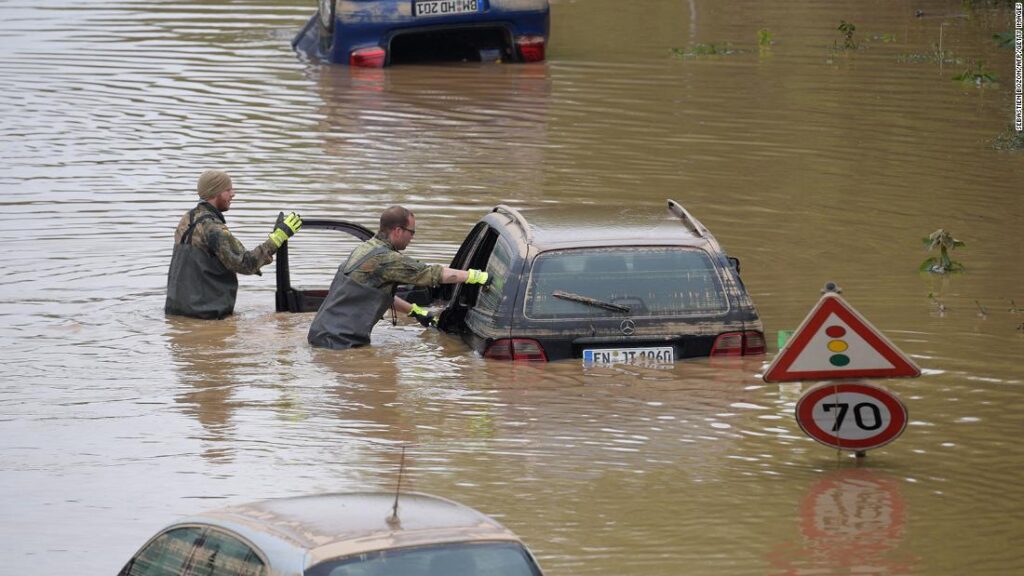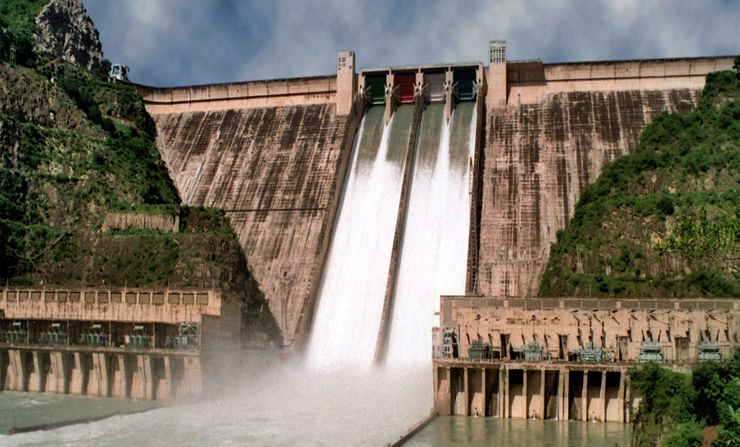IndiaWilds Newsletter Vol. 13 Issue VII
ISSN 2394 – 6946
What can we do to mitigate Climate Change?
The world is in the grip of Climate Change. Drought and wild fires in California, unprecedented floods in Germany and western Europe, record heat waves in Asia, never seen before high temperatures in Siberia causing melting of permafrost and wildfires, melting polar ice caps releasing huge amounts of ice into the ocean, rising sea levels leading to submerging of low lying areas, landslides in the Himalayas, unseasonal cyclones in both eastern and western coast of India are among the few major impacts experienced due to climate change. These increased frequency and intensity of extreme weather events is forcing people to admit that Climate change is for real.
The Paris Agreement was signed among much fanfare. The signatory countries are obligated to implement to help contain the global increase in ambient temperature to below 2 degrees centigrade above industrial revolution levels. Unfortunately, it is clear to even the casual observers that not all is well with the climate change mitigation efforts. More needs to be done urgently.
Developing countries like India have been pointing at the high carbon profligate lifestyles of the western countries and demanding more effort and funding from developed countries. The western world on the other hand is pointing out that in the last decade, India has more or less caught up with the western countries in adopting a high carbon lifestyle, as disposable income of the middle class has increased, leading to the altered lifestyle.
India has a population of 1.4 billion people. With slightly less than 20% of the world population, countries like India hold the key to our fight against climate change. A small change in lifestyle by more than a billion people can have a huge impact in lowering or increasing the overall carbon emissions.
Consumerism has fueled Climate Change:
There was a time when Air conditioners in cars were a luxury and air conditioners at home was unheard of. Very few homes had refrigerators. Today, with increased disposable incomes and also due to higher ambient temperatures, ACs and refrigerators have become common. Public transport was the norm earlier. Only the rich and Government officers had cars. Bicycles and cycle rickshaws were common. Today, the number of personal transport vehicles have exploded due to easy financing as well as higher disposable incomes. The road network hasn’t kept pace with the increase in vehicles in the road. Our towns and cities were not designed to accommodate millions of people. Roads can’t be widened beyond a point. Traffic jams and unnecessary fuel burning by the vehicles is a big contributor for climate change. Manufacturing billions of devices for our own needs which are disposed off in a couple of years; and mining for metals for these products also contributes significantly to the global carbon emissions.
Technical innovations to solve problems:
Today there is a lot of talk in the developing world regarding creating technology to fight climate change. However, it would be prudent to mention that technology per-se can’t fight climate change. Only if technical innovations result in solving problems of people and lowering the carbon footprint, then it can be of help.
Source of electricity matters:
It is well known that the transportation sector is a major polluter. This sector consumes massive amounts of fossil fuels. So there is effort to move away vehicles from petrol and diesel and run those with electricity. However, powering a car from electricity generated from a polluting coalfired thermal power plant makes no sense as apart from the pollution, the end result is still burning of coal and contributing to climate change.
Germany and a few other countries in Europe have announced that they are phasing out thermal power plants and setting up more solar power. Researchers have now invented thin solar panels which can be pasted on walls and windows to generate solar power. As a result, it would become easier as well as make solar panels affordable for the general public to adopt. This is likely to be very helpful in powering our devices as well as vehicles and help fight climate change.
The patrons of fossil fuel industry like the Koch brothers in USA who are the key backers of the Republican party which denies climate change and groups like the Adani group in India are trying their best to make Governments across the world to agree to continue with coal mining and coal-fired thermal power plants. In Australia, on the pretext of creating local jobs the Queensland Government approved Adani Carmichael coal mine even though it threatens the Great Barrier Reef. It had earlier approved the Abbot Point Coal Terminal in North Queensland which involved dredging of the Great Barrier Reef. So clearly, it is not technology which is the deciding factor. It is the people and their politics which decides whether climate change mitigation efforts will be successful or not. And along with it the fate of the planet also gets decided.
Dismantling Dams:
Hydel power plants are often referred to as green energy. However, the hydel power projects are often environmentally devastating. The dams create large reservoirs which drown huge swathes of forest land. Large contiguous forests capture lot of carbon from the atmosphere and release oxygen. When vast forest areas are drowned due to hydel power projects, the net result is higher amounts of CO2 remains in the atmosphere.
Many of our dams and hydro power generation projects have outlived their utility. Over a period due to siltation, the carrying capacity of the dam reduces and the power generation decreases. The cost of Solar has come down drastically and is way below the cost of many of these power projects. So the Government can identify these projects and then dismantle the dams. The catchment areas of the reservoirs can then be converted into forests again. This will be a good source of increasing our forest cover and help in carbon sequestration.
When dams are dismantled, rivers will start free flowing once again. This will lead to huge improvement in the riparian ecosystem. Otters, dolphins, fish like mahseer and many other species can freely move in the rivers once again. It will also stop the salinity ingress in the areas close to the sea mouth. Farming in downstream areas which is now suffering due to want of water will once again become more productive once dams are dismantled.
Reimagining the cities, we live in:
The Government of India had announced with much fanfare the setting up of Smart Cities. Apart from the usual politics, and the dumbed down implementations resulting in hardly achieving anything of substance, there is real merit in looking closely at altering the way we humans live. Since there is lack of holistic vision, our towns and cities have grown in a haphazard manner, without any real planning. And as people live in suburbs of cities and in places at a distance from existing cities, their need for daily provisions as well as other goods transport requirements creates inefficiencies in goods movement. Similarly, Urban mobility has to keep up with the change in mobility requirements as people now owning houses and/or renting cheaper places in suburbs have to still travel to the city for their work. The higher commute time leads to higher fossil fuel burning. Technology today can help bring a big change in human habitations by helping create efficient and effective plans to create environmentally sustainable cities.
Due to the Covid_19 pandemic, as lot of people were forced to work from home, the fast development of video conferencing, audio and video streaming has ensured that people are able to work even more efficiently from their homes. This has already resulted in reduction in rental rates of houses in many big cities. Unfortunately, Google, Facebook and many other companies in USA have announced plans to restart their offices. This will result in people again traveling to offices and the peak time traffic jams will be restarted. The Planet Earth would again start choking due to the immediate increase in emission of greenhouse gases.
Our Government should ask companies to allow employees to work from home. This will help a lot of people to permanently move back to smaller towns and cities and enjoy a better quality of life. At the moment cities like Bangalore, Mumbai, Delhi, Hyderabad are densely populated. As opposed to India’s population density of 382 people/sq. km, Bangalore has 4378 people/sq. km and Mumbai suburban district has a population density of 25,357/sq. km. This kind of high population in big cities creates huge demand on water, power and other infrastructure. The Metros and other big cities will be a bit decongested and it will help in reducing the infrastructure burden if Government asks various companies to allow people to work from home permanently. There won’t be need for big dams to get water for the huge cities as smaller townships can survive on the local freshwater supplies. It would be environmentally sustainable. Hence, this move would be a big help in fighting climate change as well.
Redrawing Industrial Map:
There are industries where people cannot work from home. Most of these industries are still located in and around big cities. Unless these industries move away into hinterland, the decongestion plan of big cities will not work. In the past, several companies were setup in distant locations to take benefit of the tax holidays announced by State Governments. Unfortunately, companies also need qualified people as well as roads and connectivity to logistics hubs for efficient goods transportation requirements. Hence, it is imperative that various arms of Government need to look holistically and develop plan for creation of Industrial zones, where these industries can safely relocate, to create smaller clusters which are manageable in terms of infrastructure and is environmentally sustainable. Hopefully our Government and Niti Ayog can think about it.
Conservation News:
Further Empowering STs & Other Traditional Forest Dweller in management of Forest Resources
6th July 2021
Ministry of Tribal Affairs and Ministry of Environment, Forest and Climate Change have jointly decided to give more powers to the tribal communities in managing the forest resources. A “Joint Communication” to this effect was signed by Shri R.P. Gupta, Secretary, Ministry of Environment, Forest & Climate Change (MoEFCC), and Shri Anil Kumar Jha, Secretary, Ministry of Tribal Affairs (MoTA), in the presence of Minister of Environment, and Minister of Tribal Affairs in New Delhi at Indira Paryawaran Bhawan.
The Joint Communication, addressed to all Chief Secretaries of States/UTs, pertains to more effective implementation of the Forest Rights Act (FRA), 2006 and for harnessing the potential for livelihood improvement of the Forest Dwelling Scheduled Tribes (FDSTs) and other Traditional Forest Dwellers (OTFDs).
The FRA is an Act to recognize and vest the forest rights and occupation in forest land in forest dwelling scheduled tribes (FDSTs) and other Traditional Forest Dwellers (OTFDs) who have been residing in such forests for generations but whose rights could not be recorded; to provide for a framework for recording the forest rights so vested and the nature of evidence required for such recognition and vesting in respect of forest land. The Act came into operation with the notification of Rules on 01.01.2008 for carrying out the provisions of the Act.
The joint communication notes that despite considerable lapse of time since the Act came into force, the process of recognition of rights is yet to be completed. Further, the exercise of these rights as well as operationalization of Section 5 of the Act are other areas of concern. Hence, the Ministries of Tribal Affairs (MoTA) and Environment, Forests and Climate Change (MoEFCC) deliberated on issues for smoother implementation of the Act and noted that there has been no conflict insofar as the legal framework of the law is concerned. Since the State Governments are responsible for implementation of the Act, issues related to its implementation need to be resolved at the State level in terms of the statutory provisions. It was emphasized that any queries/issues that may require clarification/hamper the implementation of FRA may be brought to the notice of Central Government so that both Ministries may take a collective view on the matter.
As per the joint communication, the frontline staff of State Forest department should extend assistance to the institutions/committees under Rule 4(1)(e) and (f) of the Act for preparing conservation and management plan for community forest resources in order to sustainably and equitably manage such community forest resources for the benefit of forest dwelling Scheduled Tribes and other Traditional Forest Dwellers and integrate such conservation and management plan with the micro plans or working plans or management plans.
It was also emphasized that enhancement of livelihood prospects of the traditional forest dwelling and forest dependent tribal and other communities requires synergy between the two ministries at the Central level and at both the Forest and Tribal Welfare/Affairs Departments of the State Governments.
Speaking on the occasion, Minister of Tribal Affairs, Shri Arjun Munda stated that tribals and other forest dwellers can contribute significantly in efforts towards climate change through preservation of biodiversity, environmental conservation and enhancing forest cover.
In his key-note address, Shri Munda said that today’s joint communication is oriented towards the rights and duties of the forest dwellers and to improve participation of such communities in the process of forest management.
The Minister further informed the gathering that a meeting was held between both ministers on 10th August, 2020 which was intended to resolve issues in ensuring community participation in forest management and today’s joint communication, is a culmination of the series of consultations done after that.
The event was attended by more than 300 participants including State Government officials such as Principal Secretaries/Secretaries in the Forest, Revenue and Tribal Welfare Departments, Principal Chief Conservators of Forest, Commissioners/Directors of Tribal Welfare Departments, Directors of Tribal Research Institutes (TRIs) as well as members from NGOs and partnering organizations.
India gets a New Environment & Forest Minister
8th July 2021
Following a revamping of the Union council of ministers, Shri Prakash Javadekar was dropped as a minister. In his place Shri Bhupender Yadav, assumed charge as Minister of Environment, Forest and Climate Change.
The previous environment minister Shri Javadekar is considered to be the worst environment and forest minister ever as he virtually opened the floodgates for decimation of India’s wilderness and wildlife. Under his aegis, vast swathes of forest land was diverted for industrial use as well as for roads, dams and other projects. The Environment Impact Assessment norms were first reduced for pharmaceutical companies in 2020 and then a systematic attempt was made to change the WPA. This had resulted in a hue and cry with many people raising their voice and sending protest emails. Few such organisations and individuals were also persecuted. Given such a background, not much is expected from Shri Yadav as an Environment and Forest minister.
Speaking with the media on the occasion, the Minister thanked the Prime Minister Narendra Modi for giving him an opportunity to work for the Government. Shri Yadav said he would make all efforts to deliver on the responsibilities given to him by the Prime Minister. If the MoEF&CC continues to act as a clearing house for industries and sacrificing forest areas, then Shri Yadav’s statement conveys who is ultimately responsible for it.
India committed to work with G20 countries for securing health of Planet Earth
22nd July 2021
Minister for Environment, Forest and Climate Change, Shri Bhupender Yadav today said that India is committed to work with the G20 countries for a better world leaving no one behind, and stands together in solidarity with the global community in mounting a strong and effective response that secures the health of the planet and its people.
Leading the Indian delegation at the G20 Environment Ministerial the Environment Minister underscored the need for a collective global action to tide over the ongoing Covid-19 crisis, and that the Developing Countries need every possible support more than ever before. The G20 Environment Ministerial Meeting held today at, Naples, Italy was attended virtually by the Indian delegation led by Shri Bhupender Yadav.
On ‘Nature Based Solutions’ (NBS) and Sustainable Finance, the Indian Environment Minister said that the contexts and perspectives should be guided by the stage of economic development, national circumstances and priorities, and must not come at the cost of developing countries’ competitiveness, equity and development.
For tackling marine litter, Shri Yadav emphasized that India have been taking voluntary regulatory measures on plastic waste management, and also recalled that in the 4thUnited Nations Environment Assembly (UNEA) in 2019, India had separately piloted a resolution No. 4/9 in the 4th UNEA on “Addressing single- use plastic products pollution”.
The Minister also mentioned about the initiatives taken by India on Resource Efficiency (RE) & Circular Economy (CE), and that the G20 Resource Efficiency Dialogue should also strengthen exchange of ideas, knowledge and best practices on RE & CE and support the transition to sustainable and equitable resource use for a better future
During the course of the daylong Meeting, India welcomed global initiatives like UNESCO’s International Environmental Experts Network; protecting at least 30% of global land area and oceans by 2030; Land Degradation Neutrality by 2030; Third Report on the G20 Implementation Framework for actions on Marine Plastic Litter; etc.
India also welcomed the G20 Dialogue on Water but reiterated taking into account national circumstances and priorities, and underlined the need for effective and implementable post 2020 biodiversity framework.
World has waited long enough for promised Climate Finance and Technologies at low cost
23rd July 2021
The G20 Energy and Climate Joint Ministerial Meeting concluded today at, Naples, Italy. It was attended virtually by the Indian delegation from the Ministry of Environment, Forest and Climate Change, and the Ministry of Power.
On the second and concluding day of the G20 summit, Shri Bhupender Yadav, Minister for Environment, Forest and Climate Change stressed that the G20 must respond to the call of science for urgent global climate action in this decade.
Speaking at different sessions on Climate Change, the Union Environment Minister underlined the need to cut absolute emissions rapidly while taking into account the Paris Agreement which emphasised on respective historical responsibilities, delivery of promised climate finance and technologies at low cost keeping in perspective per capita emissions, differences in per capita GDP and the unfinished agenda for sustainable development.
The Minister stated that India remains steadfast in its commitments to join and lead efforts to combat climate change within the multilaterally agreed convention and its Paris Agreement.
The Minister mentioned about India’s stated vision of installing 450 GW (Giga Watt) of RE (Renewable Energy) by 2030, enhanced ambition in bio-fuels, India’s NDCs (Nationally Determined Contributions) and various other initiatives taken by India on Urban Climate Action.
The Minister stressed, common but differentiated responsibilities to combat climate change, as per respective capabilities and national circumstances, lies at the heart of the UNFCCC & its Paris Agreement. “We should not be shifting goalposts and setting new benchmarks for global climate ambition”, said Shri Yadav and informed that under the visionary leadership of Prime Minister Shri Narendra Modi, India has exhibited exemplary resolve by achieving its pre 2020 voluntary commitment of reducing emission intensity.
“With increase in urbanization, it is important to create and preserve green spaces and protect biodiversity in urban areas” said the Environment Minister and informed that India’s Urban Climate Actions include Climate Smart Cities Assessment Framework, National Mission on Sustainable Habitat, Climate Center for Cities, Climate Smart Cities Alliance, Climate Practitioners India Network, Urban Forestry, etc.
India also welcomed the G20 works on Sustainable Recovery, Cities, Financial Flows, etc.
India’s 14 Tiger Reserves got Global CA|TS recognition for good Tiger Conservation
29th July 2021
14 Tiger Reserves in India which received the accreditation of the Global Conservation Assured|Tiger Standards (CA|TS). The 14 tiger reserves which have been accredited are Manas, Kaziranga and Orang in Assam, Satpura, Kanha and Panna in Madhya Pradesh, Pench in Maharashtra, Valmiki Tiger Reserve in Bihar, Dudhwa in Uttar Pradesh,Sunderbans in West Bengal, Parambikulam in Kerala, Bandipur Tiger Reserve of Karnataka and Mudumalai and Anamalai Tiger Reserve in Tamil Nadu.
Conservation Assured | Tiger Standards (CA|TS) has been agreed upon as accreditation tool by the global coalition of Tiger Range Countries (TRCs) and has been developed by tiger and protected area experts. Officially launched in 2013, it sets minimum standards for effective management of target species and encourages assessment of these standards in relevant conservation areas. CA|TS is a set of criteria which allows tiger sites to check if their management will lead to successful tiger conservation.
This was revealed in a virtual event held on the occasion of Global Tiger Day.
Equipment Discussions:
Sony launches Interchangeable-Lens Vlog Camera ZV-E10
Sony has introduced an interchangeable lens Vlog Camera ZV-E10 for Vloggers and content creators.
https://www.indiawilds.com/forums/showthread.php?19978-Sony-introduces-ZV-E10-camera-for-Vloggers
Sound Devices launches A20 Mini Digital Wireless Transmitter
Sound devices has launched A20 Mini digital wireless transmitter for broadcast and film industry. It is compact sized and full featured. Priced at $2200
Sound Devices launches A20 Mini Digital Wireless Transmitter
Pelican launches rugged lens covers
Pelican known for its rugged cases has launched a lens covers along side sleeping pads and blankets in its Outdoors series.
Blackmagic Design launches Studio Camera 4K Pro and Studio Camera 4K Plus
Blackmagic Design launches Web Presenter 4K
Natural History
COUNTRY NOTEBOOK: M. Krishnan: ‘The fastest thing on legs‘ shared By Saktipada Panigrahi
https://www.indiawilds.com/forums/showthread.php?8852-Country-notebook-m-krishnan&p=53774#post53774
TEDx Talk: Learning from India’s Wilds
A recent TEDx talk by Sabyasachi Patra explores the strategies wildlife use in their life and death battles. These learnings can help we humans in improving our lives.
Photography Tips – Learning Exposure
To make photography learning easier, we are creating a photography tutorial video series. The first part of photography tips is on learning exposure. Check it out in this link: https://youtu.be/PT3vvNIJx1g
Wildlife Photography
Leopard by Shyamala Kumar
https://www.indiawilds.com/forums/showthread.php?19948-One-for-the-road
Tiger by V S Sankar
https://www.indiawilds.com/forums/showthread.php?19946-Crossing-Cautiously!
Shikra by Mrudul Godbole
https://www.indiawilds.com/forums/showthread.php?19962-Shikra-in-Sunderbans
Sirkeer-Malkoha by Vineet Shrivastava
https://www.indiawilds.com/forums/showthread.php?19951-Sirkeer-Malkoha
Tickel’s Blue Flycatcher by Mrudul Godbole
https://www.indiawilds.com/forums/showthread.php?19952-Tickel-s-blue-flycatcher
Air Breathing Land Snail by Prajwal Ullal
Spare a Thought
An adolescent tiger adorns the cover page of the 151st issue of IndiaWilds. I was watching this tiger lazing around on a rock below a hill. A clump of bamboo forest was nearby. Around the hill was a grassland which attracts lot of deers and other prey. So this place is good for the tigress to rear its cubs. Unfortunately, this adolescent tiger which is being raised in a prime tiger habitat in one of the premier national parks is not aware what is in store for it in future.
Tigers don’t tolerate heat well. They need to cool off in a waterhole or under the shade during the day. They are opportunistic predators and when there is a chance, tigers try to hunt during the day as well. However, severe heat waves due to climate change is a big disadvantage for the tiger. These days there are more forest fires and waterholes and forest streams dry up. Life is difficult for a tiger. After escaping the heat of the day, at the right time they wake up to start the difficult process of hunting their prey.
In the premier tiger reserves, the tigers grow up well. However, soon time comes to branch out and settle on a territory of its own. It is easier said than done as tiger habitat is fast shrinking due to diversion of forests by the Government for industries and other projects. Moving from one forest to another is increasingly becoming difficult because roads cut across tiger habitat. Vehicles zoom at more than 100kmph and often tigers become roadkills. With increase in human population all lands are being cultivated or used for human habitations. So it becomes difficult for the tiger to find cover while moving from one forest to another. If we want to save the tiger, then we have to protect its habitat, ensure strict patrolling to stop poaching, create wildlife corridors between forests so that tigers and other wildlife can move from one area to the other and create a healthy genetic pool. Else this magnificent creation of God will not roam in the wilds for long.
Touche.
http://www.indi
To post in the IndiaWilds forums, you can register free of cost using your Full Name as user id at:
http://www.indiawilds.com/forums/register.php
If you are already a member of IndiaWilds and have forgotten your user id and/or password you can mail to:
administrator@indiawilds.com
Regards,
Sabyasachi Patra
Profile | Contact Us | Facebook | Diary | Equipment reviews | Forums | IndiaWilds You Tube Channel
Please post your views and feedback in the comments below.
- Endangered Wild Buffalo of Kaziranga - 4 July,2024
- Leopards: The Last Stand Trailer 2 - 1 July,2024
- GoPro Hero 12 Black - 6 September,2023















Leave a Reply